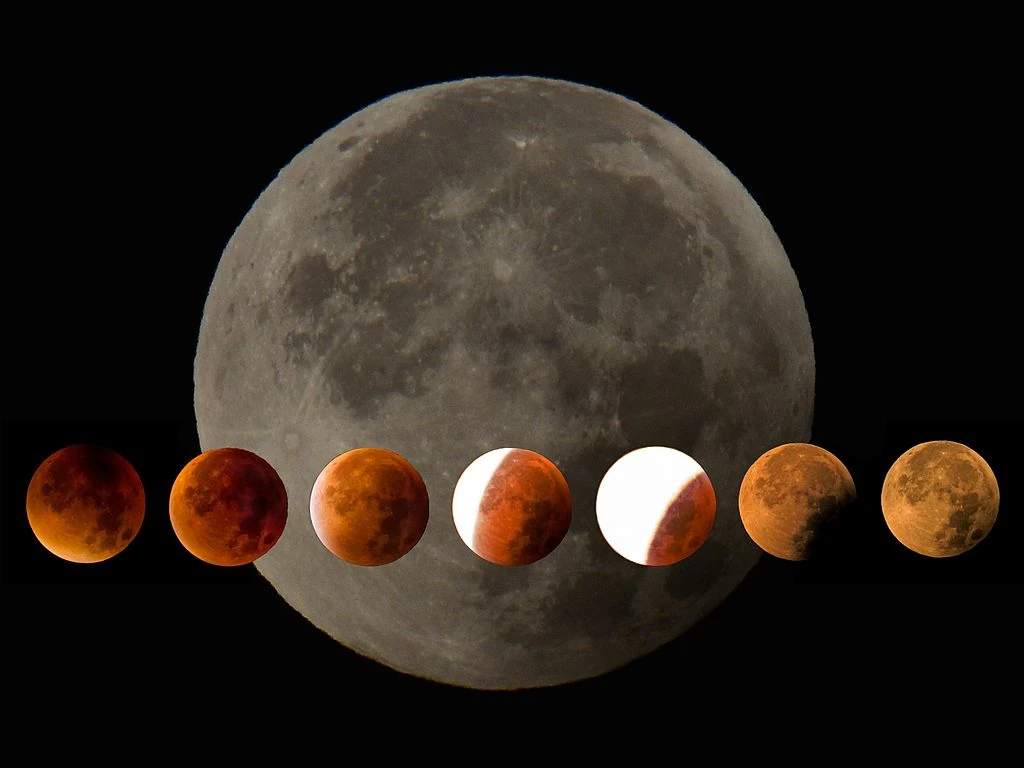The night sky will put on a breathtaking show on March 14, 2025, as a total lunar eclipse occurs, captivating skywatchers across North and South America, Europe, and Africa. This rare astronomical event will offer a striking view of the “Blood Moon”, where the lunar surface takes on a deep reddish hue due to Earth’s shadow. Whether you are an astronomy enthusiast, a casual observer, or simply a lover of celestial wonders, this eclipse is a must-see event.
What is a Total Lunar Eclipse?
A total lunar eclipse happens when the Earth moves directly between the Sun and the Moon, causing Earth’s shadow to completely cover the Moon. This results in a dramatic transformation of the Moon’s appearance as it takes on a reddish glow, earning it the nickname Blood Moon.
This color shift occurs due to Rayleigh scattering, the same phenomenon that makes the sky blue. Instead of being completely dark, some sunlight passes through Earth’s atmosphere, bending and scattering shorter wavelengths while allowing the red and orange hues to reach the Moon.
Where and When to See the Eclipse
The March 14, 2025 total lunar eclipse will be visible in the following regions:
- North America – Best viewing in Central and Western parts
- South America – Entire continent gets a great view
- Europe – Parts of Western and Central Europe
- Africa – Western and Northern regions
Key Eclipse Phases (UTC Time)
- Penumbral Eclipse Begins: 03:12 UTC
- Partial Eclipse Begins: 04:07 UTC
- Total Eclipse Begins: 05:28 UTC
- Maximum Eclipse: 06:11 UTC
- Total Eclipse Ends: 06:54 UTC
- Partial Eclipse Ends: 08:15 UTC
- Penumbral Eclipse Ends: 09:10 UTC
For local time conversions, use a time zone converter or astronomy app to ensure you don’t miss the spectacle.
How to Watch the Eclipse
One of the best things about a total lunar eclipse is that no special equipment is required to see it. However, for the best experience, consider the following tips:
Viewing Tips:
- Find a dark spot: The eclipse will be more dramatic in areas with minimal light pollution.
- Check the weather forecast: Clear skies are essential for an unobstructed view.
- Use binoculars or a telescope: While visible to the naked eye, these tools can enhance the details of the Moon’s surface.
- Take photos: A DSLR camera with a zoom lens or even a modern smartphone with night mode can capture stunning images.
Cultural and Historical Significance of Lunar Eclipses
Lunar eclipses have fascinated humanity for centuries and are often woven into myths, legends, and folklore. Some ancient civilizations considered them omens, while others viewed them as celestial battles or divine messages. In modern times, eclipses continue to be special events for astronomers and skywatchers worldwide.
Scientific Importance
Beyond its beauty, a lunar eclipse provides valuable data for scientists. Observing how Earth’s atmosphere filters sunlight helps researchers understand climate conditions. Astronomers also study the Moon’s surface temperatures during eclipses to gain insights into lunar geology.
Why This Eclipse Matters
The March 14, 2025, total lunar eclipse is significant because it offers a long duration of totality and will be visible to a wide audience. Since total lunar eclipses don’t happen every year, this is a rare opportunity to witness a stunning cosmic alignment.
Final Thoughts
Mark your calendars for March 14, 2025, and prepare for an awe-inspiring astronomical event. Whether you’re watching from your backyard, a local observatory, or tuning in through a live stream, this total lunar eclipse is sure to be a memorable experience.
Don’t forget to share your eclipse photos and experiences on social media using the hashtag #LunarEclipse2025 and inspire others to look up and appreciate the wonders of the universe!


